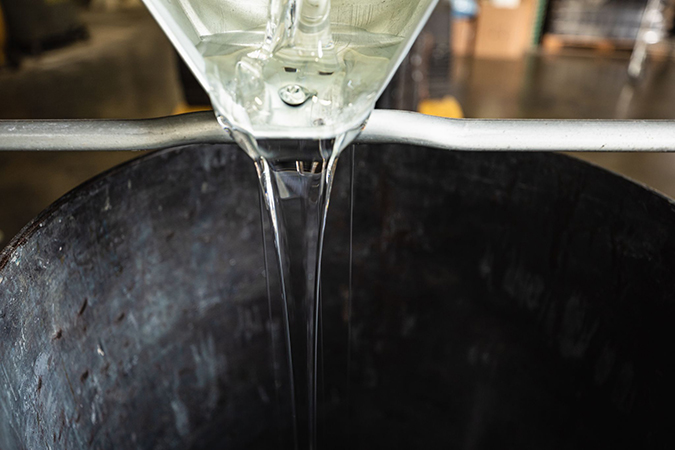BIO-DUR 560SW was created to displace water from wet surfaces in order to create a permanent bond. The product uses Kevlar fibers for reinforcement and viscosity management in order to achieve high application rates. It provides long term protection by using a proprietary combination of UV absorbers and anticorrosive pigment.
BIO-DUR 560SW is a repair compound that is useful for patching and sealing leaks both above and below water. It creates a glossy, smooth surface on rough steel and concrete while greatly improving abrasion resistance from small particle flows. The formulation is free of solvents that make it easy to apply in confined areas and in order to ensure maximum performance and safety. We use low toxicity ingredients to create a high build brushable/rollable product that is uniquely field-friendly.
This product is unique in that it can be applied above or below the water. To prep the surface before application, it must be high pressure water or abrasive blasted in order to remove any corrosion or organic contamination. Plan to apply BIO-DUR 560SW immediately after underwater surface preparation to prevent the near instantaneous build up of organic matter on the work surface. Above water we always recommend the best surface preparation method achievable, a white metal blast, but you will find that the BIO-DUR 560SW product is extremely surface tolerant of nearly any conditions.
Once mixed, apply the product by hand with a stiff brush or roller. Application by heated plural spray is another easy way to apply to large areas including sheet piling or storage tanks. BIO-DUR 560SW is able to be immersed in water immediately after application provided no extreme flow or impact hits the coating. It is designed and intended for water service at temperatures up to 120 degrees Fahrenheit. For higher temperatures please contact TFT for our other product recommendations.
BIO-DUR 560SW offers the best solution to protecting equipment from damage caused by abrasion, corrosion, and mild corrosive chemicals.

